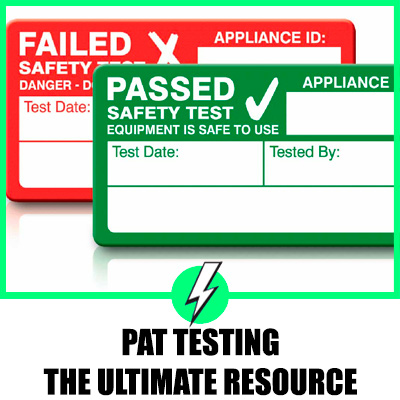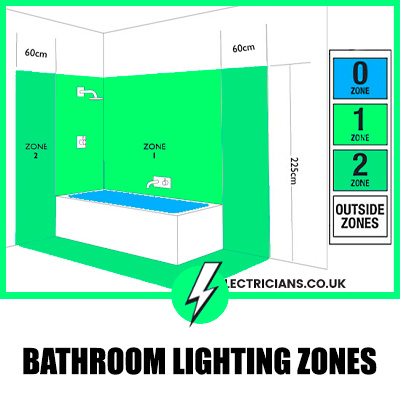PAT Testing: The Ultimate Resource
Contents
What is PAT Testing?
PAT Testing is an abbreviation for portable appliance testing. It is known by many names, such as PAT Inspection or simple PAT. This refers to the regular inspection of appliances to ensure their safety for business or workplace usage. PAT Testing is conducted to prevent electrical mishaps that may lead to emergencies or more significant electrical problems.

The process of the PAT Testing starts with an initial observation of the appliance subjected to the testing, a visual inspection, and finally, a formal general inspection that is conducted by a licensed professional.
How to conduct a PAT Test?
As previously mentioned, PAT Testing involves an initial observation of the appliance that is subjected to the testing. The general aim of this visual inspection is to conduct the following:
- An inspection of the cable and/or cord grips
- An inspection of the wiring, if they are in order
- An inspection of the condition of the plug casings
- An inspection of the rating fuse that is used, if it is matched to the appliance
- An inspection of the terminals and connections, if they are secure
- An inspection to check for signs of overheating such as discolouration or appliance damage in usual places
After the visual inspection, the next step is to conduct a full electrical combines test that may include the following:
- Earth continuity test
- Insulation resistance test
- Functional check for leakages and appliance load
If an appliance passes the testing, a sticker indicating its status will be pasted. If an appliance fails the pass testing, a sticker that is appropriate for the results will be used, instead.
If an appliance is found to have minor damages, such as incorrect wiring or damaged cord handles, the minor damages will be repaired so that the appliance is up to passing standards. Significant damages that are not considered to be “quick fixes” will be brought to the attention of the business owners with an expectation of the appropriate action that will be required.
PAT Testing Equipment
PAT Testing equipment such as PAT testers and PAT tester leads may be used for newbies who are conducting a PAT Testing. It gives more accurate and straightforward results to aid the PAT Testing process. While helpful to beginners, they are also used by more experienced professionals due to their convenience and accuracy.
PAT testers can only be used for suitable appliances. This is why the brand and the make of your PAT tester matters, as it determines the number and type of appliances that you can use it on. Generally, the more expensive and higher-quality the PAT tester, the more extensive is its range of applicable devices.
One advantage of using PAT testers is that it reduces the risks of an electrical shock as it already detects the quality of an appliance primarily before the device is a hazard and reports an accident before it happens.
- Portable PAT testers
The most recommended kind of PAT testers to novices are portable PAT testers. They simply indicate a result of the testing, whether the appliance passed or failed.
- Full reading PAT testers
These are testers that are preferred by professionals, or those that require a numerical description of the appliances’ performance. Full reading PAT testers give a more accurate reading as compared to portable PAT testers that rely on qualitative values.
- BattPat PAT tester
Battery-powered portable appliance tester, better known as BattPat, is a type of testing equipment that relies on the built-in batteries for energy to carry out its function.
A BattPat PAT tester (link to check the price on Amazon) is a simple portable appliance type that gives a pass or fail result. It is easy to use, and perfect for newbies who are conducting PAT Testings for fundamental purposes.
It sometimes can come in a package of other PAT Testing equipment. Some electrical firms/companies that sell the BattPat testers also offer seminars or workshops for an introduction to essential BattPat tester calibration and usage.
- Seaward PAT tester
Seaward PAT testers are testers manufactured by Seaward, one of the world’s leading PAT tester manufacturers.
Seaward offers a wide range of PAT testers that are perfect for you, your needs, and your preferences. There are testers for in-house non-professional testers. Some testers are excellent to aid the work of an electrical contractor.
Seaward testers (link to price on Amazon) include the most basic portable testers for fundamental inspections, up to advanced testers that give the most accurate measurements.
How often should you PAT Test?
The frequency that you should conduct a PAT Testing depends on the type of appliance in question.
The general rule to remember when it comes to PAT Testing frequency is that the more challenging an appliance environment is, and the more demanding is its usage, the more routinely it should be PAT Tested.
For an easier understanding, let’s look at two appliances that are used in two entirely different settings.
- A hotel hairdryer
- A construction site power tool
Because the power tool is used more frequently and for a more demanding purpose than a hotel hairdryer, the power tool needs to be tested on a higher regularity.
How to become a PAT Tester
As previously mentioned, you do not need to be a licensed professional to conduct a PAT Testing. This is why there is PAT Testing equipment for both novices and professionals alike.
However, electricians seek to become PAT Testers as it is an in-demand skill set. Similarly, business owners and property managers aim to become PAT Testers to benefit from the PAT Testing requirements.
The following are the choices you can take to become a PAT Tester:
- Enrol in a commercial or FE college that offers a PAT Testing course — full packages, albeit more expensive, also offer training courses
- Take a PAT Testing course online and learn in your own pace — this is recommended to those who already have a background in electrical work. (You get a free PAT testing course with the Seaward PAT tester on Amazon)
- Buy a full-set PAT Testing equipment kit that also includes everything you need to become a PAT Tester
PAT Testing regulations in the UK
PAT Testing in the UK is legislated to comply with the following laws and regulations:
- Health and Safety at Work Act of 1974
- Electricity at Work Regulations in 1989
- Provision and Use of Work Equipment regulations of 1998; and
- Management of Health and Safety at Work regulations of 1999
There are two main reasons why PAT Testings are conducted:
- To ensure the compliance of a business establishment or workplace to the laws mentioned above and regulations
- To ensure the safety of workers, customers, visitors, or anyone who frequents the business establishment or workplace.
To support the second purpose, PAT Testing requires all landlords, business owners, employers and self-employees to regularly ensure that the portable appliances that are used within the establishment in question are safe and functional for its specific purpose. This urges landlord and business employers to conduct regular maintenance repairs to the portable appliances.
By reinforcing the PAT Testing law, we are reducing the risks of accidents that are linked to faulty electrical appliances. This, in turn, reduces fires and other disasters that may lead to inevitable tragedies.
If you recall, PAT Testing involves a three-step process, within which, the third step is a general inspection of the product conducted by someone who is considered to be competent.
That competent someone is someone who became a PAT Tester through enrolling in a course, whether online or from an accredited college, or from a PAT Testing equipment kit. In general, the person who is legally accepted to conduct a PAT Testing is someone who has sufficient knowledge on the testing of appliances, given that they are certified for their skills and knowledge.
PAT Testing for landlords
PAT Testing is included in a landlord’s responsibility, over any real estate that he leases to any tenant. While the legal requirement for PAT Testing is rather unstrict, a landlord must ensure the safety of the appliances that are being used within the property.
It’s also recommended that a landlord furnishes the property with appliances that have passed European production laws and are BEAB-approved. These appliances are marked with the CE sticker and are ensured to be produced by a recognized factory, through approved methods, and satisfactory factory equipment.
A regular testing regime is recommended for a landlord to comply with PAT Testing:
- Before a new tenant moves in, ensure that the appliances included within the rented unit are safe and in good condition. It is also a wise idea to provide new tenants with the instruction manuals for the electrical devices that they will be renting with the unit.
- For smaller appliances such as hair dryers, toasters, fans, and lamps, routinely check for their condition every two years.
- More significant and durable appliances such as washing machines, dryers, refrigerators and dishwashers should be checked for every four years.
PAT Test Stickers
There are only two kinds of stickers that are used for PAT Testing:
- PASS sticker for appliances that have complied with the testing criteria
- FAIL sticker for appliances that have significant damage and needs repair or replacement
A PAT Tester can buy his set of PAT Test stickers through various channels in the UK. They are also for sale at online retailers, and eBay.
PAT Testing Course
The most popular method to become a certified PAT Tester is to take a PAT Testing course. They are available at colleges or through online portals.
Typically, an online PAT Testing course can run anywhere from £40-£45. PAT Testing courses that are offered in colleges are more expensive as they provide in-campus training and practice with PAT Testing equipment. Typically, a PAT Testing course in a college is somewhere from £240-£280.
Most PAT Testing courses include a certification. While no UK standard is needed to become a PAT Tester, companies and business entities will be more inclined to hire you if you have the credentials to show for it.
(You get a free PAT testing course with the Seaward PAT tester on Amazon)
Hire can I hire a PAT Tester?
The easiest and most advisable way of hiring a PAT Tester is to browse your local directories for professional electricians who are also certified PAT Testers. There are lots of licensed electricians who are certified to conduct PAT Testings. You can look for them through your local electrical directories or your local electrician firms.
There are also lots of online job listings for PAT Testers. You only need to narrow down your search by your area in the UK.
PAT Testing FAQs:
The following are the frequently asked questions that are related to PAT Testing.
Do new appliances need to be PAT tested?
No, brand new appliances do not need to be PAT tested as it is expected that they arrive in brand new condition. However, you are always encouraged to conduct a simple visual test upon receiving new appliances.
Do you have to be an electrician to conduct a PAT Test?
As discussed previously, you do not need to be an electrician to become a PAT Tester. You can simply attain certification as a PAT Tester by attending a PAT Testing course. Some courses are specifically catered to non-electricians those who have no prior knowledge of electrical work.
Is a PAT Testing a legal obligation?
If we take that question at its face value, the simple answer is no; PAT Testing is not a legal obligation.
However, it is a legal obligation for landlords, business owners and employers to comply with the four laws and regulations that are mentioned under the ‘PAT Testing regulations in the UK’ subcategory. PAT Testing is a requirement under these four laws and regulations. Therefore, as a technicality, PAT Testing is, in fact, a legal obligation.
You have now read everything you need to know, including methods on how to become a PAT Tester, as well as the frequently asked questions that are related to testing. This will provide you with a better understanding of the job at hand if you ever wish to undertake it for yourself.





